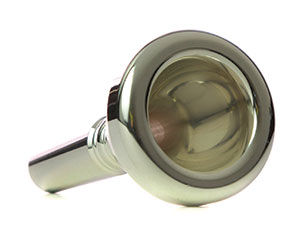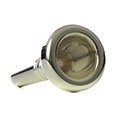Students can easily get caught in a practice rut, merely repeating passages, etudes, or solos with hopes of great improvement in doing so. Such students would benefit from learning a simple method to practicing. For brass players, a breathe-sing-buzz-play approach is best, as it is easy to remember and can be repeated at home in between lessons. Perhaps what makes this routine so helpful is that it addresses several problems simultaneously.
Ideally, the process should begin immediately after an error is detected. An error is not just a missed note; it can be an endurance, response, or intonation problem. The beauty of following through with this process is that even when things are supposedly going well, students can still reap fantastic benefits by building great fundamental habits.
Breathe
After an error is detected, the first thing a student should do is put the instrument down, relax, and blow through the passage with just air. The key is to relax first. This will reduce tension, improve air efficiency, and force the student to take a break. Often, brass students play too much when practicing and quickly become tired before any progress is made. Any breathing exercise done well will work here, such as blowing through the leadpipe, using a breathing tube, or playing a breath pattern. After this, the student should freely blow while fingering along to help connect the air to their playing. If they are seated, they should try standing up and breathing; this can help reduce tension as well. Breathing also helps students prepare the mind for learning and retain information better.
Sing
With that same relaxed breath, the students should sing the excerpt. By using a metronome, any problems with rhythms or time will become apparent. In addition, the pitch can be checked with a tuner or piano. Different syllables and vowel shapes can also be experimented with while drawing upon ideas gleaned from extensive listening.
Passages should be sung as musically as possible, exaggerating the phrase as if it is the most emotional composition in the world. The student should pay close attention to every nuance in the music, including articulation, dynamics, and vibrato. Again, fingering along while singing is preferred. Singing is also closely tied to visualization, which has had proven benefits for musicians and athletes for many years.
Buzz
Not every brass teacher agrees with mouthpiece buzzing, but there are far too many benefits (especially for inexperienced players) to ignore this simple concept. With that same relaxed breath and musical feeling the student practiced with the breath alone, the student should buzz the passage on the mouthpiece. It can be buzzed with the mouthpiece alone or with one of the many available devices inserted into or attached to the lead pipe. Most students will respond well by alternating the two. Often, holding the mouthpiece in one hand will reveal a more efficient position, as students might place pressure on a different area, or set the mouthpiece at a more optimal angle. Holding the mouthpiece with the thumb and forefinger of the non-dominant hand will help ensure minimal pressure is being applied.
Occasionally, the student should gently blow into the mouthpiece several times, without forming an embouchure to double check the absence of any extra tension. After a relaxed exhalation, the student should slowly form his or her embouchure, while still blowing through the mouthpiece. Eventually the buzz will begin with less tension and will produce a fuller, more resonant sound. Done correctly, mouthpiece buzzing will help develop the ear, improve breathing, and create a better sound.

Play
Again, using that same relaxed breath and musical concept, the student may now replay the passage. If, at any point, the sound isn’t more relaxed or full, any or all of the steps should be repeated. Once a student is comfortable with the process, the whole sequence should only take a few minutes. When possible, students should also record the passage before and after these steps. Hearing the improvement in one’s sound and accuracy is a strong motivator and can keep them on track. Also, students should keep on exploring new ways to breathe, sing, and buzz to keep their practice interesting and varied. At the very least, students will develop great practice habits and build fundamental sound production techniques. By using this simple approach, they will be on their way to improving sound, accuracy, intonation, and endurance with every practice session.






